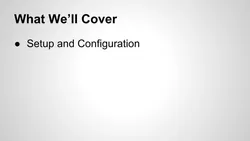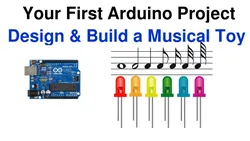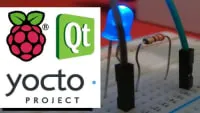
Unleash The Raspberry Pi Through Physical Computing 
This course is designed for beginners interested in unlocking the hardware potential of their Raspberry Pi. It covers the basics of setting up a Raspberry Pi, as well as the General Purpose Input/Output, I2C Protocol, and SPI Protocol. Students will learn how to create a simple home monitoring device and will have the basic knowledge and skills required to start creating their own Pi-based hardware projects. ▼
ADVERTISEMENT
Course Feature
![]() Cost:
Cost:
Free Trial
![]() Provider:
Provider:
Skillshare
![]() Certificate:
Certificate:
Paid Certification
![]() Language:
Language:
English
![]() Start Date:
Start Date:
On-Demand
Course Overview
❗The content presented here is sourced directly from Skillshare platform. For comprehensive course details, including enrollment information, simply click on the 'Go to class' link on our website.
Updated in [February 21st, 2023]
(Please note the following content is from the official provider.)
This class is for beginners interested in unlocking the hardware potential of their Raspberry Pi so that it can interact with the physical world.
This is the first class on Skillshare to cover the Raspberry Pi and contains just over 3 hours of video instruction.
During the course we'll take this pile of stuff:
And turn it into this:
The class will start with the very basics of setting up a Raspberry Pi straight out of the box. It will then cover 3 main capabilities provided by the Raspberry Pi for physical computing:
General Purpose Input/Output
I2C Protocol
SPI Protocol
Students will become very familiar with each of these via the class project which will be to create a very simple home monitoring device.
At the end of the class, students will have the basic knowledge and skills required to start creating their own Pi-based hardware projects.
The Class Will Cover the Following:
Setup:
Unboxing and setting up the Raspberry Pi
PI GPIO Header:
What it is and the functionality it provides
General I/O:
How to configure and use a pin as an input and output
SPI Protocol:
What it is and how to use it on the Pi
Sensors:
How to hook them up and read them
I2C Protocol:
What is is and how to use it on the Pi
To the Cloud:
How to connect your creation to the web without writing a website
...and much more
As needed, the class will discuss basic electronics principles but is not meant to provide deep coverage of that topic. I'll walk you through everything you need to know to stay safe and have fun. The class will use the Python programming language. Programming experience is not required but will definitely help.
The following is a shopping list of items for the class project if you wish to follow along:
Raspberry Pi (power supply, SD card, keyboard, monitor, internet connection via ethernet cable or wifi adapter)
Pi Case (optional but recommended) - Make sure you can still access the header pins.
Breadboard (large)
Soldering Iron and Solder (very little soldering, maybe borrow)
Several Feet of Hookup Wire
Pi Cobbler from AdaFruit (optional)
330 resistor (1)
1K resistor (3)
10K resistor (2)
LED (any color)
Breadboard-Mountable Switch
Breadboard-Mountable Push Button
Break Away Male Header Pins (optional for solding to breakout boards)
Seven Segment Serial Display
TMP102 Breakout Board
PIR Motion Sensor from Parallax
To help with your shopping I've created a shopping list at Sparkfun which contains almost everything you will need. While the temp sensor and display are only sold by Sparkfun you can get the rest of the parts from any distributor like Mouser, Newark or Digikey. I love Sparkfun but recommend NOT buying breadboards from them as they are very difficult to break in.
Sparkfun Shopping List
I recommend getting the motion sensor either directly from Parallax or from Mouser.
If you're in Europe you can find a lot of this stuff at proto-pic which should save you some money on shipping.
If you have any questions about the list of the materials before making a purchase feel free to contact me at sidwarkd at hardlysoftware dot com.
(Please note that we obtained the following content based on information that users may want to know, such as skills, applicable scenarios, future development, etc., combined with AI tools, and have been manually reviewed)
This class is for beginners interested in unlocking the hardware potential of their Raspberry Pi so that it can interact with the physical world.
This is the first class on Skillshare to cover the Raspberry Pi and contains just over 3 hours of video instruction.
During the course we'll take this pile of stuff:
And turn it into this:
The class will start with the very basics of setting up a Raspberry Pi straight out of the box. It will then cover 3 main capabilities provided by the Raspberry Pi for physical computing:
General Purpose Input/Output
I2C Protocol
SPI Protocol
Students will become very familiar with each of these via the class project which will be to create a very simple home monitoring device.
At the end of the class, students will have the basic knowledge and skills required to start creating their own Pi-based hardware projects.
The Class Will Cover the Following:
Setup:
Unboxing and setting up the Raspberry Pi
PI GPIO Header:
What it is and the functionality it provides
General I/O:
How to configure and use a pin as an input and output
SPI Protocol:
What it is and how to use it on the Pi
Sensors:
How to hook them up and read them
I2C Protocol:
What is is and how to use it on the Pi
To the Cloud:
How to connect your creation to the web without writing a website
...and much more
As needed, the class will discuss basic electronics principles but is not meant to provide deep coverage of that topic. I'll walk you through everything you need to know to stay safe and have fun. The class will use the Python programming language. Programming experience is not required but will definitely help.
The following is a shopping list of items for the class project if you wish to follow along:
Raspberry Pi (power supply, SD card, keyboard, monitor, internet connection via ethernet cable or wifi adapter)
Pi Case (optional but recommended) - Make sure you can still access the header pins.
Breadboard (large)
Soldering Iron and Solder (very little soldering, maybe borrow)
Several Feet of Hookup Wire
Pi Cobbler from AdaFruit (optional)
330 resistor (1)
1K resistor (3)
10K resistor (2)
LED (any color)
Breadboard-Mountable Switch
Breadboard-Mountable Push Button
Break Away Male Header Pins (optional for solding to breakout boards)
Seven Segment Serial Display
TMP102 Breakout Board
PIR Motion Sensor from Parallax
To help with your shopping I've created a shopping list at Sparkfun which contains almost everything you will need. While the temp sensor and display are only sold by Sparkfun you can get the rest of the parts from any distributor like Mouser, Newark or Digikey. I love Sparkfun but recommend NOT buying breadboards from them as they are very difficult to break in.
Sparkfun Shopping List
I recommend getting the motion sensor either directly from Parallax or from Mouser.
If you're in Europe you can find a lot of this stuff at proto-pic which should save you some money on shipping.
If you have any questions about the list of the materials before making a purchase feel free to contact me at sidwarkd at hardlysoftware dot com.
Pros & Cons

Good introduction to Raspberry Pi

Great tutorial for basics

Very happy with video

Content is out of date

Class is meh
Course Provider

Provider Skillshare's Stats at AZClass
Discussion and Reviews
0.0 (Based on 0 reviews)
Explore Similar Online Courses

Millionaire DJ: FL Studio 12 - Pro Music Production Course

Your first Arduino project: Design and Build a Colorful Musical Toy

Python for Informatics: Exploring Information

Social Network Analysis

Introduction to Systematic Review and Meta-Analysis

The Analytics Edge

DCO042 - Python For Informatics

Causal Diagrams: Draw Your Assumptions Before Your Conclusions

Whole genome sequencing of bacterial genomes - tools and applications

Powering your Home Projects with Raspberry Pi

Creative Audio Programming on the Raspberry Pi


Start your review of Unleash The Raspberry Pi Through Physical Computing